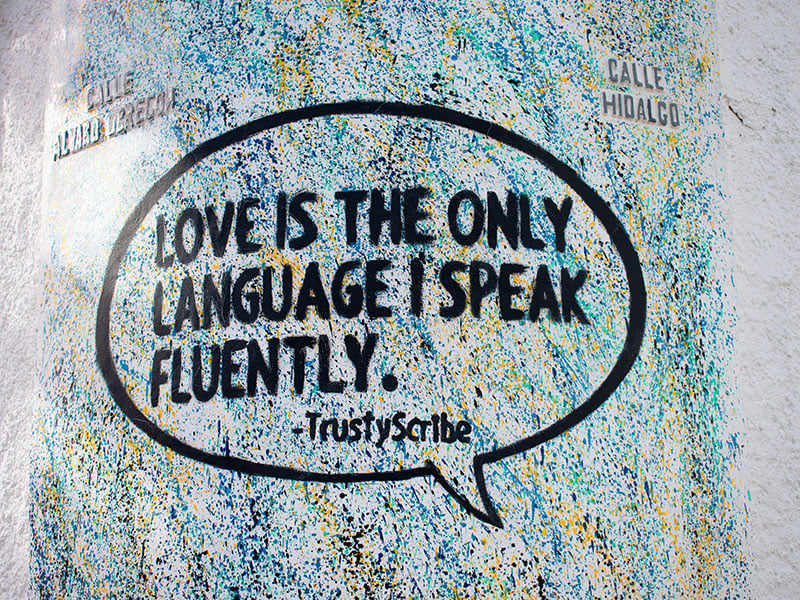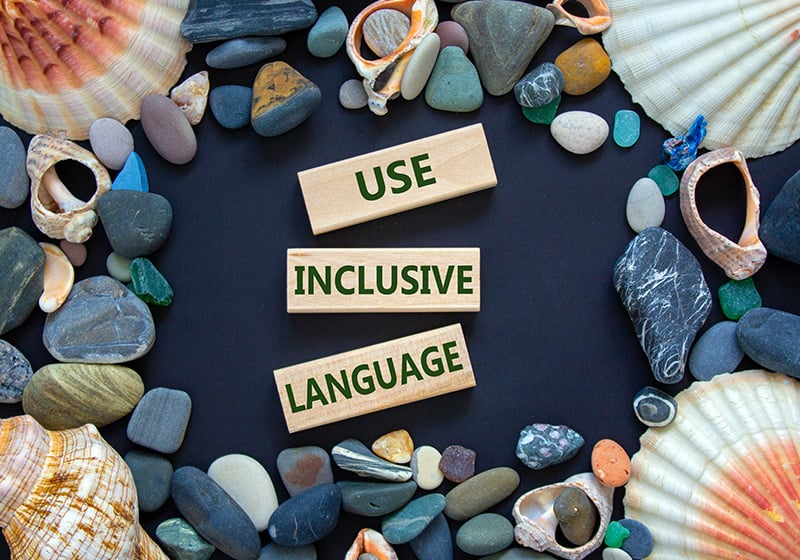Table of Contents
Inclusive language: what it is and how to use it
We’ve talked before about the importance of designing packaging that’s easily accessible for all. In today’s article, we’re going to look at how words are used. Language reflects the society in which we live, because it describes our present and anticipates our future. And because we live in an extremely diverse world, we can sum up the direction in which language is heading with a single word: inclusivity.
Consumers around the world are rightly demanding that brands are in step with cultural shifts towards greater diversity, equity and inclusion. This means that marketers must keep abreast of these changes and craft corporate communications that reflect customers’ lived experiences.
When marketing is inclusive, brands connect with the broadest section of the population possible, and the bond with existing customers is further strengthened. It’s no coincidence that a study conducted by Google in 2019 in the US revealed that 69% of African Americans are more likely to purchase from a brand that positively reflects their race/ethnicity in its communication. The study also showed that the same was true of sexual orientation: 71% of LGBTQ+ consumers said they were more likely to engage with an advertisement that authentically represented their sexuality.
So it’s clear that there’s much more to inclusive corporate communication than just posting about International Women’s Day or Black History Month. Every blog article, social media story, newsletter and website landing page must use inclusive language. If we take just the American public alone, 5% identify as LGBTQ+, 20% suffer from mental health problems and 26% of the population have a disability. This means that people’s background, ethnicity, nationality, culture, gender, sexual orientation and much more must be taken into account when creating communications with equality and inclusivity at their heart.
What does creating inclusive content actually mean?
Inclusive language uses neutral terminology to refer to people, regardless of their experience. In a world that’s becoming increasingly global and diverse when it comes to neurology, ethnicity, sexuality, gender, religion and race, inclusive communication is a way of showing that everyone deserves respect. Creating inclusive content means carefully thinking about meaning and form to amplify the resonance of and engagement with the message as much as possible.
Because anyone can see our content, we must choose our words with the utmost care. Those responsible for writing corporate communications should know how to talk to their target audience, because an offended or overlooked customer can do immediate and lasting damage to the business.
It’s therefore essential that communicators understand the different ways in which words might be understood. There are no wrong words. But there are wrong uses of words. We must stop and think about the language we use so that we can avoid words, expressions and tones that reflect prejudices, stereotypes and clichés.

What are the goals of inclusive language and why is it important for a small business?
By crafting more inclusive corporate communications, we are trying to achieve three main goals:
- To create a better experience for all current and future customers.
- To identify shortcomings in the products or services offered by the company and to try to resolve them, thereby increasing customer satisfaction.
- To make the experience accessible to a wider number of individuals so that they include those who might not have previously considered purchasing our products.
How does this happen? It’s the result of the paradox of specificity, which holds that when you design something for more specific needs, you end up creating a product that’s attractive to far more people.

To better understand this concept, let’s look at a few examples of advertising campaigns that have used inclusive language well:
- Nike: the American sportswear leader is renowned for creating ads that challenge the often warped perceptions that we have of athletes. For Nike, “if you have a body, you’re an athlete”. In 2020, to promote these values at the height of the pandemic, the brand launched the “You can’t stop us” campaign. Using a clever split-screen montage, the ad’s narrative played on physical separation to bring back together the people who are striving for everyone’s health. The images unite people from all over the world with different ethnicities, religions, cultures, physiques and disabilities. It carries a universal message that emotionally engages a very wide audience. The viewer becomes part of the story, making them too an athlete competing for the common good. In terms of results, a stunning 46% of consumers said they were more likely to purchase a Nike product after seeing the ad. It’s a success that highlights the value of inclusive language.
- Adobe: although more and more brands are using inclusive images in their advertising, Adobe is firmly committed to using language that is welcoming to widest possible audience. A case in point is its Instagram feed which, through digital artworks created using its software, celebrates artist diversity. It’s important to note that Adobe hasn’t confined this approach to a single advertising campaign, but has adopted inclusive language for all of its communications. In doing so, the company has made diversity a hallmark of its social media presence. What can we learn from them? Undoubtedly how to subtly but powerfully manage social media content without turning inclusivity into a sales gimmick. This raises a number of questions that can help us improve our online presence: What’s your Instagram feed like? Is the content that you share inclusive in terms of shape, size, colour and gender? Where do you have room for improvement?
- Pampers: for the 2019 Super Bowl, Pampers decided to create an ad that challenged the stereotype of the mother being the only person who could change a nappy. In this comic video, John Legend and Adam Levine are shown busy changing their kids’ nappies while singing about the difficulties faced by all fathers. The ad is aimed at new fathers who know that changing nappies is no longer the exclusive job of women. It uses language that highlights new problems which we are experiencing in society. In this way, the brand is getting closer to customers’ needs by broadening the reach of the message and product. Ask yourself how your communication can challenge stereotypes and show that you are a brand that is in step with changes in society.
Guidelines for adopting more inclusive language
Words are born in over time and develop in culture. If we’re not careful in how we use them, we can end up conveying a message at odds with what we originally wanted to say. This often happens when we don’t understand the socio-cultural background of our target audience. This might appear daunting, but by following a few guidelines we can improve our communication skills so that we write content that makes people feel welcome. To create inclusive communication with the right social sensibility, you need to take the following approaches:
- Don’t focus on a single gender: when you were designing your product or service, you will have realised that it was more suitable for a particular type of customer, the buyer persona. But this ideal customer should not be idealised. Indeed, if you decide that just one gender is target for your message, you should ask yourself who you are excluding with this strategy. Adopting inclusive language means embracing diversity and reaching a wider audience than you previously thought you could because you were blinkered by certain expectations and stereotypes.
- Make sure you know what terminology can offend and then unlearn it: each person carries with them their own socio-cultural traits based on their lived experience and background. Understanding the audience we are talking to and their everyday reality is fundamental for knowing what might offend them. This can happen with racist terms we aren’t familiar with and which can cause serious offence. If you want to make your communication truly inclusive, you need to learn about non-inclusive communication so you can then unlearn it.
- Clarity means kindness: we should always aim to be transparent in our communication. Providing clear information without trying to trick or manipulate people brings customers closer to the brand and makes them feel welcome.
- Write and speak in an accessible way: there’s no need to try and impress people with complicated terminology. Your message should reach as many people as possible, including those who don’t have a high level of education or suffer from a disability. By getting rid of complex terms from your conversation with the customer and providing suitable tools for accessing content, you can reduce friction with the brand and improve relationships with customers.
The goal of inclusive communication is to encourage companies to consider the wider implications of their messages. You’re bound to trip up here and there; but what matters is that you apologise and learn from the mistake so that you keep improving your social sensibility and with it your relationship with customers.

